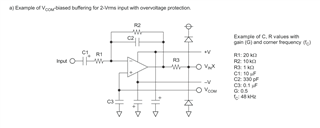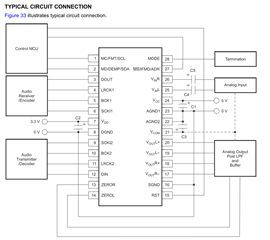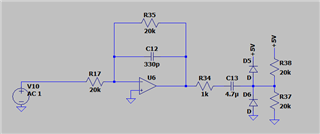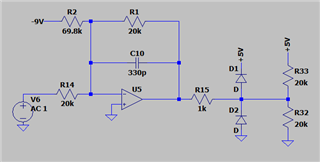Hi there,
I'm seeing some conflicting information in the PCM3060 datasheet and here on the forum that has me confused about how to properly connect a buffered AC signal to the PCM3060 input.
First, the application example circuit in the datasheet recommends we connect Vcom to the + pin of an op amp. Vcom is supposedly 0.5* Vcc. If Vcc is 5V then this would result in a 3.75V offset applied to the input of the ADC (VinX). If the full scale input range is about 0V to 5V, then why 3.75V?
In-addition, one page earlier, the typical connection diagram recommends using a large bypass capacitor at the input, which isn't shown in the application example above. Why would we use Vcom to bias the input up to 3.75V if we're just going to remove it with the bypass capacitor?
Furthermore, this post here on the forum (https://e2e.ti.com/support/audio-group/audio/f/audio-forum/1236805/pcm3060-ac-couple-analog-inputs?tisearch=e2e-sitesearch&keymatch=PCM3060#) states that you don't need to bias the input at all and the input circuitry provides the 2.5V bias required. So why does the application circuitry recommend using Vcom?






